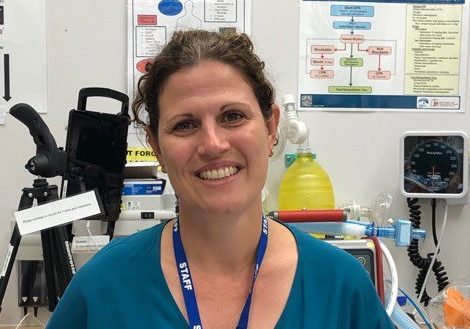
Improving sedation in children
26 April 2019
Gold Coast Health Emergency Specialist, Dr Megan King and her team have been awarded a $60,000 Emergency Medicine Foundation grant to look at how to improve the sedation experience in children.
Dr King, who works in the children’s emergency department at Gold Coast University Hospital, says it’s all about making children as comfortable as possible in a scary environment.
“Children regularly present to emergency departments and require a medication called ketamine to sedate them while we perform necessary but painful medical procedures. There are two different ways to give the medication,” Dr King said.
“Most commonly, ketamine is given by injection into a vein. This procedure can be difficult to achieve with just one attempt and often takes multiple needle sticks to achieve intravenous access. Restraint of the child is necessary, which can be distressing for both the child and parent, and can have long term psychological impacts.”
Delivering ketamine by injection into a muscle (similar to an immunisation needle) can be an easier and quicker way of giving the medicine, and has the potential to be less distressing.
What Dr King and her team, which includes Dr Shane George from Gold Coast University Hospital and Dr Ben Lawton from Logan Hospital, want to establish is which one of these methods most reliably provides the required level of sedation and what is the optimal dose of ketamine to give to achieve this sedation, with the aim of only having one needle stick to a child.
The hypothesis is that ketamine via one needle only, as an injection into the muscle, can provide adequate sedation for children, and be less distressful for the child. This study will also look at the adverse effects, length of stay in the emergency department and length of sedation of intramuscular ketamine, when compared to intravenous ketamine.
“We also think it might have some economic benefits as well, but the focus is less distress for children.”
The hope is for this to be a multicentre study, aiming to include 600 patients. The first roll-out will be focused at the Gold Coast University Hospital. The patient’s parents will be asked if they mind participating in the study, and the child will be randomised to either get the intravenous or the intramuscular injection. The children analysed will be broken up into age groups.
The research is expected to begin 1 June and Dr King said she and her team were thrilled with the grant money.
“It was a great surprise. This funding means that we can employ research nurses to be involved in the study. Our nursing staff drive a lot of our research, and are essential for accurate data collection. It’s been really handy to have the support of the Emergency Medicine Foundation to do it.”
SHARE



